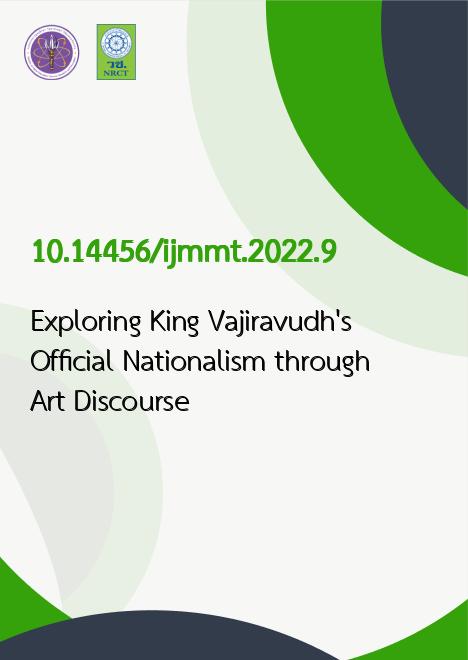
|
Exploring King Vajiravudh’s Official Nationalism through Art Discourse |
|---|---|
| รหัสดีโอไอ | |
| Creator | Sompong Amnuay-ngerntra |
| Title | Exploring King Vajiravudh’s Official Nationalism through Art Discourse |
| Publisher | Luangporyai Association |
| Publication Year | 2565 |
| Journal Title | International Journal of Multidisciplinary in Management and Tourism |
| Journal Vol. | 6 |
| Journal No. | 2 |
| Page no. | 99-112 |
| Keyword | King Vajiravudh, nationalism, political ideology, art discourse, heritage |
| URL Website | https://so03.tci-thaijo.org/index.php/ijmmt |
| Website title | https://so03.tci-thaijo.org/index.php/ijmmt |
| ISSN | 2730-3306 |
| Abstract | Art, in all creative forms and productions, has played a leading role in shaping and constructing political ideologies, values and actions. Being influenced by its spatial-temporal dimensions, art often reflects social and political conditions by taking account of intentions, motivations, and reasons for human action. The ruling bodies and state leaders often arouse nationalistic emotions of their subjects and instill the populace’s sentiment to maintain their status and position in society. This article explores the relationship of art and politics by addressing a distinctive form of official nationalism under King Vajiravudh, who sought to retain his political sovereignty by imposing the political ideology on all his subjects through art discourse. The development of nationalism in the Thai context is relatively unique in many ways that further raised questions – What is the main concept of official nationalism under King Vajiravudh? In what way did he use art to promote nationalistic sentiments? This study aims to provide a textual and historical analysis of art as political discourse of nationalism under King Vajiravudh. The main concept of his political ideology is to instill a new degree of commitment, loyalty and sacrifice to the nationalistic trinity of ‘Nation, Religion, and Monarchy’. The king valued the concept of civilised pedigree and used heritage to stimulate nationalistic sentiments through the revival of traditional art and architecture as a part of heritage conservation. The main theme for his performing art was to strengthen and glorify the institution of absolute monarchy and to propagate concept of national unity and patriotism with a great pride in Siamese cultural heritage. |